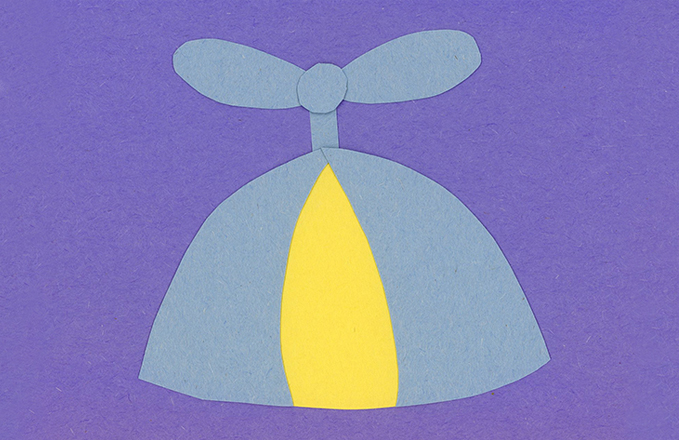
I’ve been told more than once that a design is too childish.
Elements that might inspire this feedback are bright colors, illustrations, quirky icons, and thick fonts. Sometimes these concerns are valid, but more often, this is an oversimplification. What makes a design childish? Lettering that looks hand drawn? Shapes that are loosely rendered instead of crisply generated by a computer? Illustrations instead of photography? If these are the markings of childish design, then what’s wrong with being childish?
There’s a huge difference between work made by an actual child versus professional work that uses organic, loose elements in purposeful ways.
So to me, childlike is a better term than childish to describe some of the work I do. Also, something can be childlike and sophisticated at the same time. Children aren’t the only people who are drawn to bright colors and playful geometry. An irregular shape that’s cropped in an interesting way can feel boldly elegant, and a clean shape that’s used in a more conventional way can feel sleepy and amateurish. There are no hard and fast rules.
Some clients think that illustration is for kids and photography is for adults. To me, illustration often feels more sophisticated than photography because it can be customized for a particular message. It’s easy for photography to feel generic because we see so much of it. This is compounded by the overuse of stock photography. Different brands end up using the exact same images.
To be childlike is to have a sense of curiosity, playfulness and whimsy. Most adults agree that these are good qualities to maintain at any age. A willingness to keep learning and an ability to find delight in small details—this is what makes life interesting. So why not tap into the core of our humanity when talking about mature ideas?
When I’ve worked on technology brands, an illustrated, brightly colored approach is often welcomed. Technology marketers know that products without a human context are impossible to relate to. Whimsy, playfulness and visual surprises bring abstract, sometimes dry ideas to life.
Ironically, I’ve encountered fear of childishness multiple times when working on children’s brands. Clients often want to create a distinction between the young people they serve and the high-end product that they provide. But there’s no need to overcompensate with an overly straight approach. Brands that take themselves too seriously aren’t usually very memorable.
Whether something appears childlike or not is highly subjective, so I acknowledge that my opinion isn’t absolute. I also understand that playfulness isn’t right for every brand. In general, I welcome a visual environment that’s filled with bright, fun colors and thoughtful, uniquely crafted imagery. I don’t see any need to tone down whimsy in design. The world is serious enough as it is.
